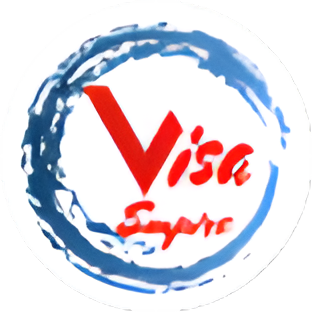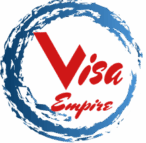DAMA Visa Explained: 482,186,494- Pathways to Permanent Residency in Australia
The Designated Area Migration Agreement (DAMA) is an increasingly important tool for addressing regional and state-level skill shortages in Australia. Under DAMAs, employers can sponsor overseas workers for visa subclasses that are not always available under standard skilled migration programs, particularly Subclass 482 (Skills in Demand), Subclass 494 (Skilled Employer Sponsored Regional, provisional), and in some cases Subclass 186 (Employer Nomination Scheme, permanent).
DAMAs often come with concessions on age, English, experience, and salary, making them an attractive route for both employers and migrants.
In this guide, we’ll explain how DAMAs work, what the visa pathways are under them, and how these visas can lead to permanent residency (PR). We’ll also highlight recent updates (as of 2025) and key compliance considerations.
What is a DAMA and Why It Exists
A DAMA is a labour-market agreement between the Australian Federal Government (Department of Home Affairs) and a Designated Area Representative (DAR) that is typically a state government or regional authority.
- A DAMA has a head agreement, which establishes the list of occupations, the designated region, and negotiated concessions (such as salary or English flexibility).
- Under that head agreement, endorsed employers can negotiate individual labour agreements with the Commonwealth. It allows them to sponsor overseas workers under those agreed terms.
- These labour agreements usually last for five years, giving employers a predictable framework to plan their recruitment.
The key benefit for regions is that DAMAs let them access a broader pool of overseas workers for occupations that might not be well-covered in the national skilled migration lists, or where there are unique local needs.
Visa Subclasses Under DAMA: 482, 494, 186
The three main visa subclasses used in DAMA labour agreements are as follows:-
Subclass 482- Skills in Demand (SID)
- Often up to 4 years under DAMA settings (depending on the DAMA).
- Employers nominate a worker for a DAMA-approved occupation; the worker applies under the labour agreement visa stream.
- Under many DAMAs, there are concessions. For instance, English requirements may be lowered, or work-experience requirements can be relaxed.
- Time spent on a 482 under a DAMA can be used to qualify for a permanent stream (such as 186) if the DAMA’s terms allow.
Subclass 494- Skilled Employer Sponsored Regional (Provisional)
- This is a regional visa. It is valid for up to 5 years under many DAMAs.
- It encourages settlement in regional areas. DAMAs may include these roles specifically to support local labour demand.
- After a required period of work under 494, there may be a pathway to a permanent visa, depending on the DAMA’s conditions.
Subclass 186- Employer Nomination Scheme (ENS)
- This is a permanent visa. Under some DAMAs, there is a labour agreement stream specifically for 186.
- Many DAMAs negotiate concessions (e.g., age up to 55, English flexibility) so that a worker on a DAMA 482 or 494 can transition to 186 more easily.
- Not all DAMAs provide a 186 stream. Hence, employers and migrants must always check the specific DAMA’s terms.
Concessions Under DAMA: Why They Matter
One of the key strengths of DAMA is that it offers more flexibility than standard skilled visa programs. These are some common concessions:-
- Age concession: In many DAMAs, the age limit for visa applicants is higher than usual. For example, WA’s DAMA allows up to 55 years.
- English language concession: Certain occupations may require lower English test scores (or relaxed minimum band scores) than under the usual visa settings.
- Work experience/qualification concession: Some DAMAs allow more flexible experience or qualification thresholds for the nominated worker.
- TSMIT (salary) concession: DAMA may allow a reduced threshold for the Temporary Skilled Migration Income Threshold (TSMIT). For example, WA’s DAMA provides for salary concessions under certain criteria.
These concessions make DAMA pathways viable for more employers and workers, particularly for semi-skilled roles or those where national skilled migration criteria may otherwise be restrictive.
Recent DAMA Regions & Updates (2024–2025)
Western Australia (WA) DAMA
- The statewide WA DAMA was established in July 2024.
- According to the WA DAMA eligibility criteria (updated May 2025), the visa subclasses allowed are 482, 494, and 186.
- For many applicants exploring the DAMA visa Perth opportunities, the concessional conditions presented below are significant:
- Age limit up to 55 years.
- English concessions, such as for many occupations, IELTS 5.0 with no minimum band score (for 482, 494) is accepted.
- Work experience concession depends on whether the role is in metropolitan Perth or in regional WA.
- There is also a permanent pathway (186) under WA DAMA, but eligibility depends on location and employment duration:-
- 3 years in Metropolitan Perth, or
- 2 years in Regional WA, under the DAMA labour agreement.
- Endorsement for WA DAMA is valid for 12 months, so employers must use their endorsement within that timeframe.
You can learn the employer and worker requirements in our guide to the DAMA visa process in WA.
- SA’s two DAMAs (the Adelaide City Technology & Innovation DAMA and the Regional Workforce DAMA) have been extended to 30 June 2026.
- The PR pathway for 482 (Skills in Demand) visa holders has been reduced to 2 years under SA DAMA (previously it was 3 years).
- SA continues to offer:-
- Age concession up to 55 years.
- A 10% reduction in TSMIT for many roles.
- English and work experience concessions for certain occupations.
- 128 new occupations were added to the SA Regional DAMA (construction, agribusiness, ICT, health, education, renewable energy, etc.).
- As of 1 July 2025, some occupations covered by industry labour agreements (ILAs) will no longer be accessible through the SA DAMA. Thus, employers must use the relevant ILA instead.
- SA is also planning negotiations for a new 5-year statewide DAMA in 2025-26.
If you’re exploring employer sponsorship options in the state, you can go through our practical walkthrough on DAMA South Australia.
How Employers and Migrants Use DAMA: Practical Process
Here’s a detailed step-by-step guide on how an employer (and a prospective migrant) can leverage a DAMA:-
1. Employer endorsement
- The business applies to the Designated Area Representative (DAR) for endorsement.
- The DAR assesses the organisation’s eligibility, business structure, workforce plan, genuine need, and compliance capacity.
2. Labour Agreement with Home Affairs
- Once endorsed, the employer negotiates (or lodges) a labour agreement with the Department of Home Affairs under the terms set out in the DAMA head agreement (occupation, concessions, ceilings).
3. Nomination and Visa Application
- After the labour agreement is in place, the employer nominates overseas workers for DAMA-approved visa subclasses (482, 494, or 186).
- The workers apply for the visa via ImmiAccount, submitting required evidence (skills assessment, English, etc.).
4. Compliance and Reporting
- Employers must meet ongoing compliance (paying correct wages, terms and conditions, reporting).
- Many DAMAs require annual reporting to the DAR. For example, WA mandates that endorsed employers submit annual reports.
5. Permanent Residency Transition (if applicable)
- If the DAMA allows, after a certain period of work (and meeting other conditions), the employer can nominate the worker for a Subclass 186 under the labour agreement stream.
- Alternatively, in regional DAMAs, workers on 494 might become eligible for other regional permanent streams (depending on DAMA).
6. Pathways to Permanent Residency (PR)
One of the biggest reasons DAMAs are on the radar for migrants is the potential pathway to PR, especially via 186 or regional permanent visas. Here’s how those work in practice:
- From 482 to 186 (ENS labour agreement stream):
- Under many DAMAs, once a worker on a 482 (via labour agreement) completes the required period of employment, the employer can nominate them for a permanent 186 visa.
- Thanks to DAMA concessions, the English, age, and work-experience criteria may be more favorable than the standard 186 pathways.
- From 494 (regional DAMA) to PR:
- In some regional DAMAs, after working for a fixed period (e.g., 3 years or more), 494 visa holders may become eligible to apply for a permanent visa.
- The exact permanent visa option (and its conditions) depends heavily on the DAMA; not all DAMAs support the same permanent streams.
- SA-specific update:
- Under the South Australia DAMA, as of its extension, holders of the 482 (Skills in Demand) visa can apply for 186 after just 2 years with their employer.
- This makes SA DAMA one of the fastest DAMA-to-PR pathways currently available.
- WA-specific pathway:
- Under WA’s DAMA, eligibility for 186 depends on whether the worker has served the requisite time in the region which is 3 years in Metropolitan Perth, or 2 years in regional WA.
Key Risks, Compliance, and Things to Watch
While DAMAs are powerful, they are not risk-free. Both employers and migrants should pay close attention to:
- Endorsement Validity: For example, WA DAMA endorsements are only valid for 12 months.
- Genuine Labour Market Need: Employers must demonstrate a genuine need. They often need to show labour market testing or evidence that Australians were not available for the role.
- Compliance: Once a labour agreement is in place, both sponsor and employee must adhere to its terms (salary, conditions, reporting).
- Variation Requests: If an employer wants to change the number of nominations or occupations mid-agreement, they may need to submit a variation request through their DAR.
- Expiry or Transition of DAMA: Regional needs do evolve. For instance, South Australia is negotiating a new statewide DAMA for 2025-26.
Benefits of DAMA for Migrants and Employers
For Employers:
- Access to a wider pool of overseas workers (including semi-skilled roles) with more flexible criteria.
- Salary and age concessions that make hiring more cost-effective and feasible.
- Predictability through negotiated labour agreements.
For Workers / Migrants:
- Potential to be employed in roles that may not exist on standard skilled occupation lists.
- More accessible English and work-experience requirements.
- A clearer and often accelerated pathway to PR (especially under the 186 labour agreement stream).
How to Check and Stay Updated
If you are considering a DAMA pathway, these are critical resources to monitor:
- Department of Home Affairs DAMA page: For head-agreement details, visa subclass rules, and links to DARs.
- State / Territory DAMA websites:
- WA Migration Services including WA DAMA eligibility, occupation list, endorsement criteria.
- South Australia Skilled & Business Migration including SA DAMA occupation list, recent extensions, concession conditions.
- DAR communications: When employers apply for endorsement, DARs often publish annual reports, updates, and variation-request windows.
Wrapping Up
The DAMA program offers a powerful and flexible mechanism for both Australian employers and overseas workers to navigate regional skill needs. By allowing tailored agreements, it gives states and territories the ability to fill roles that traditional skilled migration channels may struggle to address. It offers migrants more realistic and concessional pathways to permanent residency.
- For employers, DAMA brings a structured but flexible way to sponsor workers, with negotiated terms that reflect local labour realities.
- For skilled migrants, DAMA may be the most viable route into Australia’s regional or state labor markets, especially for roles with high demand but not always covered in national visa programs.
As always, the critical first step is to check the specific DAMA details (occupation list, concessions, PR pathways) for the region in question. Policies do evolve. For instance, SA just updated its PR pathway, and WA’s DAMA criteria were revised in 2025. Keeping up to date will help employers and potential migrants make informed decisions.
Navigating DAMA applications, labour agreements, and PR pathways can be quite complex. But you don’t have to do it alone.
Visa Empire is Perth’s leading migration consultancy, trusted by thousands of applicants and employers across Australia. We specialise in:
- DAMA visa applications
- Employer sponsorships (482, 186, 494)
- Skills assessments
- PR transition strategies
- Regional migration planning
Our experts stay up-to-date with the latest immigration laws, DAMA concessions, and PR pathways, ensuring your application is accurate, compliant, and strategically positioned for approval.
If you want to secure your future in Australia through the DAMA program, Visa Empire is going to be your most reliable partner.
Contact us today and initiate your permanent residency journey with us by your side.



